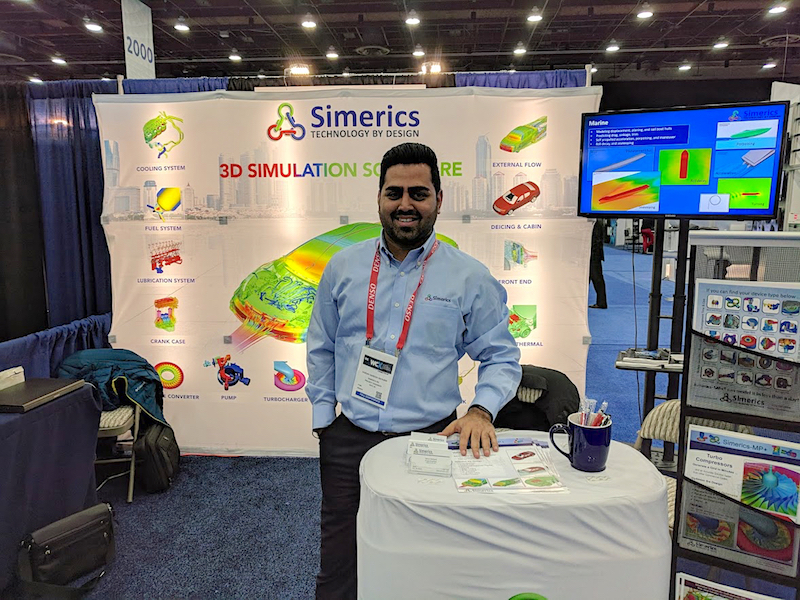Dynamic challenges
Lisa Kulick
Sep 23, 2020

Source: Varun Nichani
Varun Nichani earned a Master of Science in Mechanical Engineering prior to working for Simerics.
The energy and buzz in the Department of Mechanical Engineering was like nothing he had experienced before. Varun Nichani had come to Carnegie Mellon University in 2013 to pursue his master’s degree after completing undergraduate work at Indian Institute of Technology (IIT) Bhubaneswar. He was new to Pittsburgh but was familiar with the city’s growth in innovation as well as Carnegie Mellon’s reputation
“Knowing that entrepreneurs such as Vinod Khosla were part of the school left no doubt in my mind that Carnegie Mellon has a great legacy,” he said. Crediting the value of the company one keeps, he added that the intellectually rich, vibrant and multi-cultural student community at the university played a large role in the learning process.
A favorite memory from Nichani’s time at Carnegie Mellon was the opportunity to conduct classes and hands-on experiments for high school students to explore and learn scientific phenomena during the summer.
“It was particularly challenging to explain simple concepts such as pressure, which we master’s and Ph.D. students used on a regular basis and never had to explain to anyone,” he said. “The program definitely pushed me to think harder and made concepts in my head clearer. As Albert Einstein once said, ‘If you can’t explain it simply, you don’t understand it well enough.’"
It is going to be tough. But, that is what is going to bring out the best in you....
Varun Nichani, Project Engineer, Simerics
Today Nichani works as a project engineer at Simerics, a company that develops, markets and supports the commercial Computational Fluid Dynamics (CFD) software SimericsMP+. He describes his work as being similar to that of a methods development engineer or an application engineer. SimericsMP+ is an in-general, multi-purpose and multi-physics three dimensional (3D) CFD code.
“My role is to develop and build a method to solve customers’ problems in the area of fluid dynamics and heat transfer using the code,” Nichani explains. “The challenging part is to develop a procedure that not only yields accurate simulation results but also does so in a fast and efficient manner in order to beat competition.”
His education in the master’s program served Nichani well. He recalls a project during his second year at Simerics where he was tasked with a blind test, on-site at one of the largest auto manufacturers in the country. He had to perform an external aerodynamic simulation to predict the flow in the under hood region of a car using the software.
“The major challenge was that this application was fairly new to everyone at our company. But, because of the robustness of the code and the confidence that the developers had in it, I was able to build the model and produce reasonable results within two and a half days,” he said.
“This surely made a great impression with the customers as their current process took four to six weeks to complete. After further streamlining the process and making it more efficient, the turnaround time was brought down to one day. This led to the customer replacing the current procedure with our software.”
Another project Nichani enjoyed working on was the coupling between a major one-dimensional (1D) CFD tool in the industry and Simerics’ software, a partnership that brought the best of both 1D and 3D worlds into the simulation framework. “1D simulations are computationally very inexpensive compared to 3D simulations and can help replace some 3D components in a system where it may not be very important to capture space varying flow fields and speed up the simulation,” he explained.
“In collaboration with a leading auto manufacturer in the country who provided experimental data, I was able to simulate and validate the performance of an engine lubrication system using the 1D-3D coupling approach in a very time efficient manner,” Nichani said. The results of the simulation and comparison with experimental data was published in the 2019 SAE World Congress.
When asked for words of advice to students considering a graduate program in Mechanical Engineering at Carnegie Mellon, Nichani had this to share: “You will meet and interact with many great minds. Everyone works hard. It is going to be tough. But, that is what is going to bring out the best in you and it will all be worth it.”